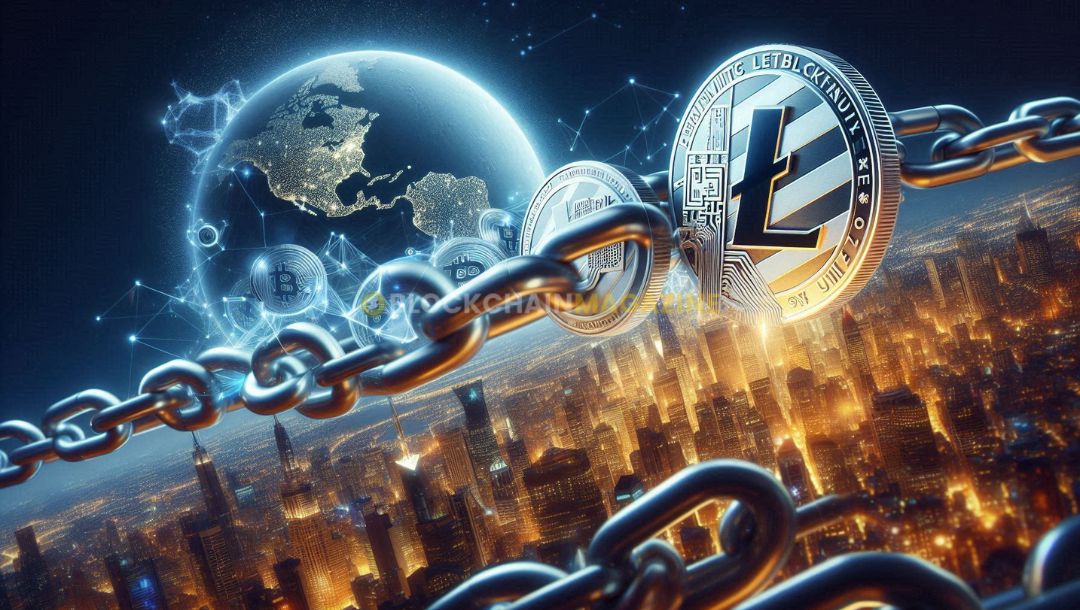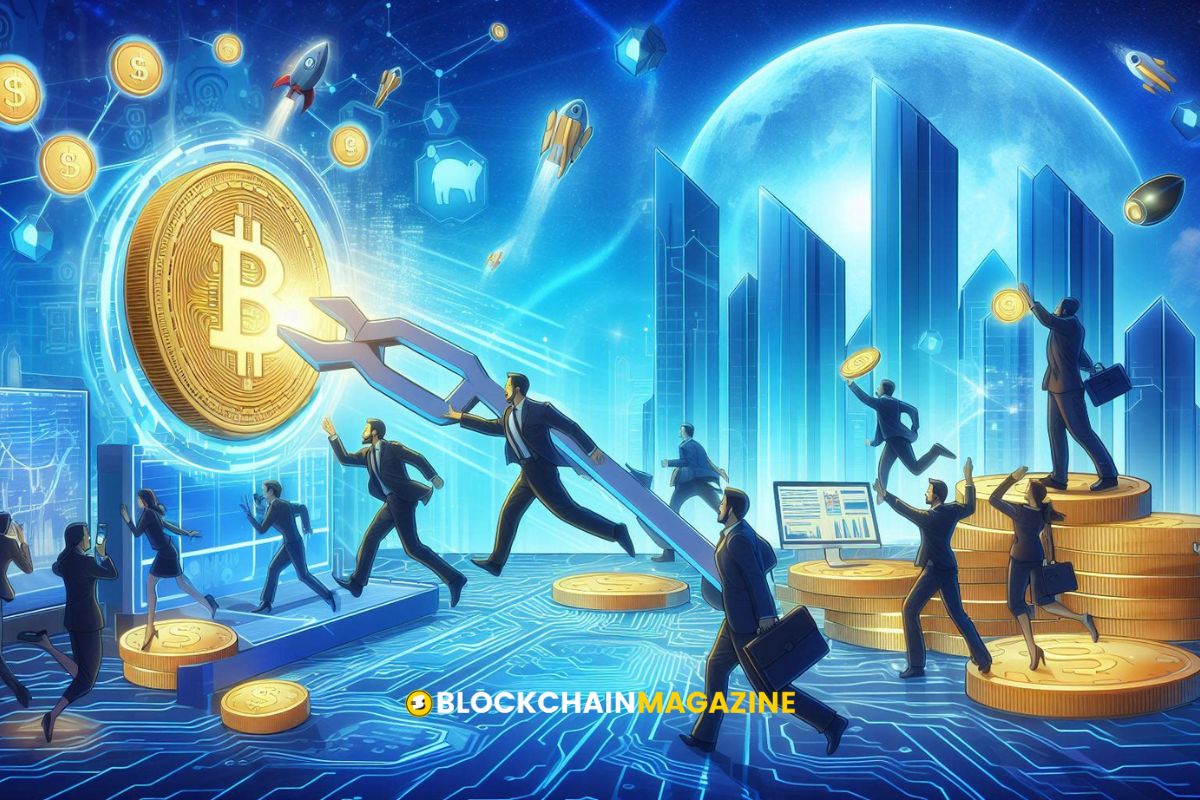Litecoin and Chain Linking The Future of Decentralized Finance
In the ever-changing world of digital money, Litecoin and Chainlink are making a big splash in decentralized finance (DeFi). These two giants are helping to change how we think about money and finance. This article looks at Litecoin’s rise, its unique features, and how it’s shaping the future of finance. We’ll also compare it to Chainlink and explore the challenges and predictions for both.
Key Takeaways
- Litecoin is proving to be more useful than Chainlink and is likely to keep this advantage in the future.
- DeFi is becoming a strong alternative to traditional banks and financial institutions, thanks to blockchain technology.
- Charlie Lee believes Litecoin will continue to grow, especially in crypto payments.
- Litecoin has unique features like a different mining algorithm and higher coin supply compared to Bitcoin.
- Analysts have mixed predictions about Litecoin’s future, with some expecting a drop in value.
The Rise of Litecoin in Decentralized Finance
Litecoin’s Edge Over Chainlink
Litecoin has shown significant promise in the decentralized finance (DeFi) space. Litecoin is generally better than Chainlink in terms of utility and is expected to maintain this advantage in the future. This is largely due to its efficiency in crypto payments and its ability to be mined with consumer-grade hardware.
Charlie Lee’s Vision for Litecoin
Charlie Lee, the creator of Litecoin, has been vocal about its potential. He highlights Litecoin’s rise, especially in overtaking Bitcoin in crypto payments on BitPay. Lee shares insights on Litecoin’s future, including its role in making transactions more efficient and decentralized.
Litecoin’s Role in Crypto Payments
Litecoin enables instant payments to anyone in the world. This feature makes it a strong contender in the DeFi space. The ability to process transactions quickly and efficiently is crucial for the growth of decentralized finance. Additionally, Litecoin’s mining process is designed to be accessible, allowing more people to participate in securing the network.
Understanding Litecoin’s Unique Features
Mining Algorithm and Coin Supply
Litecoin (LTC) is a cryptocurrency that shares features with Bitcoin but runs a different mining algorithm. It also has a higher coin supply and lower transaction fees, making it more accessible for everyday use. This unique combination gives Litecoin an edge in the decentralized finance (DeFi) space.
Instant Payments and Consumer-Grade Mining
Litecoin enables instant payments to anyone in the world. It can be efficiently mined with consumer-grade hardware, making it more inclusive. This feature has led to rapid growth in user base and transactions, securing its place in the DeFi ecosystem.
Utility in the DeFi Ecosystem
Litecoin is generally better than Chainlink in terms of utility and would probably maintain its edge well into the future. Its ability to facilitate quick and low-cost transactions makes it a valuable asset in decentralized finance. Litecoin’s role in crypto payments is significant, and it continues to gain traction.
Litecoin’s unique features make it a strong contender in the DeFi space, offering both accessibility and efficiency.
The Impact of DeFi on Traditional Financial Systems
Lending and Borrowing in DeFi
DeFi is changing how people lend and borrow money. Instead of going to a bank, people can use blockchain technology to make these transactions. This means fewer middlemen and often lower costs. DeFi is becoming a strong alternative to traditional banks.
Blockchain’s Role in Financial Decentralization
Blockchain is the backbone of DeFi. It allows for secure and transparent transactions. This technology is making financial services more accessible to everyone. People can now take part in financial activities without needing a bank account.
The Future of Financial Systems
The future of money is being shaped by DeFi. As more people use decentralized finance, traditional financial systems will need to adapt. This could mean more innovation and efficiency in financial services. DeFi is not just a trend; it’s a revolution in how we think about money.
DeFi is revolutionizing payments in 2024 by integrating with traditional finance and driving innovation and efficiency in financial services.
Challenges and Predictions for Litecoin
Market Analysts’ Predictions
Analysts at WalletInvestor do not predict a rosy future for Litecoin. They expect LTC to drop by more than 20% to $52 by the end of 2024. This forecast has caused concern among investors who are closely watching the market trends.
Potential Risks and Challenges
Litecoin faces several challenges in the competitive crypto market. One major risk is the volatility of cryptocurrency prices, which can lead to significant losses. Additionally, regulatory changes can impact Litecoin’s adoption and usage. Staying ahead in technology and security is crucial for Litecoin to maintain its position.
Future Prospects for Litecoin
Despite the challenges, Litecoin has potential for growth. Charlie Lee, the creator of Litecoin, highlights its rise, overtaking Bitcoin in crypto payments on BitPay. Lee shares insights on Litecoin’s future, including its role in decentralized finance (DeFi). With continuous development and community support, Litecoin could maintain its edge well into the future.
Litecoin is generally better than Chainlink in terms of utility and would probably maintain its edge well into the future.
Blockchain Technology and Its Influence on DeFi
Blockchain technology has brought about significant changes in the world of finance. One of the most notable innovations is the ability to conduct transactions without the need for a central authority. This has made financial services more accessible and transparent.
The metaverse is an emerging digital space where people can interact in virtual environments. Blockchain plays a crucial role here by providing a secure and transparent way to manage digital assets and identities. This ensures that users can trust the system and engage in various activities without worrying about fraud.
DeFi has emerged as a powerful alternative to the centralized control of banks and financial institutions. Powered by blockchain technology, it allows for decentralized and inclusive financial models. This means that anyone with an internet connection can access financial services, regardless of their location or economic status.
The project’s success in raising over $1.7 million without relying on venture capitalists highlights the decentralized and inclusive nature of DeFi.
Comparing Litecoin and Chainlink in the DeFi Space
Utility and Use Cases
Litecoin and Chainlink both play important roles in the DeFi space, but they serve different purposes. Litecoin is generally better than Chainlink in terms of utility and is often used for everyday transactions due to its fast processing times and low fees. On the other hand, Chainlink is crucial for providing reliable data to smart contracts, making it indispensable for many DeFi applications.
Market Performance
When comparing market performance, Litecoin has a higher coin supply and lower transaction fees, which makes it more accessible for daily use. Chainlink, however, has seen significant growth due to its unique role in the DeFi ecosystem. Both cryptocurrencies have shown resilience and potential for future growth.
Community and Developer Support
Both Litecoin and Chainlink have strong communities and active developer support. Charlie Lee, the creator of Litecoin, has been vocal about its future, emphasizing its role in crypto payments. Chainlink, meanwhile, continues to innovate in interoperable blockchains and synthetic assets, influencing DeFi’s growth in top 5 intriguing ways. Polkadot, Chainlink, Uniswap, Aave, and Synthetix are key players in revolutionizing decentralized finance.
Litecoin and Chainlink each bring unique strengths to the DeFi space, making them both valuable assets for different reasons.
When it comes to the DeFi space, Litecoin and Chainlink are two names that often come up. Litecoin is known for its fast transaction speeds and low fees, making it a popular choice for everyday transactions. On the other hand, Chainlink is celebrated for its ability to connect smart contracts with real-world data, which is crucial for many DeFi applications. Want to dive deeper into how these two cryptocurrencies stack up? Visit our website for a detailed comparison and stay updated with the latest trends in the crypto world.
Conclusion
In summary, Litecoin and Chainlink are both key players in the world of decentralized finance (DeFi). Litecoin, with its ease of use and faster transaction times, continues to be a strong contender in the crypto space. On the other hand, Chainlink’s ability to connect different blockchains makes it a crucial part of the DeFi ecosystem. As DeFi grows, both Litecoin and Chainlink will likely play important roles in shaping the future of finance. Whether it’s through faster payments or better blockchain connectivity, these technologies are paving the way for a more decentralized and inclusive financial system.
Frequently Asked Questions
What makes Litecoin better than Chainlink?
Litecoin is generally seen as having better utility compared to Chainlink. It is widely used for crypto payments and has a strong track record in the DeFi space.
How has DeFi changed traditional finance?
DeFi, or Decentralized Finance, offers an alternative to traditional banks and financial institutions by using blockchain technology. It allows for lending, borrowing, and other financial activities without middlemen.
What is Charlie Lee’s vision for Litecoin?
Charlie Lee, the creator of Litecoin, believes that Litecoin will continue to grow in the crypto payment space. He has shared his insights on how Litecoin can overtake Bitcoin in certain areas.
What are the unique features of Litecoin?
Litecoin has a different mining algorithm compared to Bitcoin, a higher coin supply, and lower transaction fees. It also enables instant payments and can be mined with consumer-grade hardware.
What do market analysts predict for Litecoin?
Some market analysts, like those at WalletInvestor, predict that Litecoin’s value might drop by more than 20% to around $52 by the end of 2024.
How does blockchain technology impact DeFi?
Blockchain technology is the backbone of DeFi. It helps create decentralized and inclusive financial systems, and is also shaping the future of digital businesses and the Metaverse.
Stay informed with daily updates from Blockchain Magazine on Google News. Click here to follow us and mark as favorite: [Blockchain Magazine on Google News].
Get Blockchain Insights In Inbox
Stay ahead of the curve with expert analysis and market updates.
latest from tech
Disclaimer: Any post shared by a third-party agency are sponsored and Blockchain Magazine has no views on any such posts. The views and opinions expressed in this post are those of the clients and do not necessarily reflect the official policy or position of Blockchain Magazine. The information provided in this post is for informational purposes only and should not be considered as financial, investment, or professional advice. Blockchain Magazine does not endorse or promote any specific products, services, or companies mentioned in this posts. Readers are encouraged to conduct their own research and consult with a qualified professional before making any financial decisions.

 Bitcoin
Bitcoin  Ethereum
Ethereum  Tether
Tether  XRP
XRP  Solana
Solana  Dogecoin
Dogecoin  USDC
USDC  Cardano
Cardano  Lido Staked Ether
Lido Staked Ether  TRON
TRON  Sui
Sui  Avalanche
Avalanche  Wrapped stETH
Wrapped stETH  Toncoin
Toncoin  Chainlink
Chainlink  Shiba Inu
Shiba Inu  Stellar
Stellar  Wrapped Bitcoin
Wrapped Bitcoin  Hedera
Hedera  Polkadot
Polkadot  WETH
WETH  Bitcoin Cash
Bitcoin Cash  LEO Token
LEO Token  Uniswap
Uniswap  Litecoin
Litecoin  Pepe
Pepe  Hyperliquid
Hyperliquid  Wrapped eETH
Wrapped eETH  NEAR Protocol
NEAR Protocol  USDS
USDS  Ethena USDe
Ethena USDe  Aptos
Aptos  Internet Computer
Internet Computer  Aave
Aave  Mantle
Mantle  Cronos
Cronos  POL (ex-MATIC)
POL (ex-MATIC)  Ethereum Classic
Ethereum Classic  MANTRA
MANTRA  Render
Render  Monero
Monero  Bittensor
Bittensor  Artificial Superintelligence Alliance
Artificial Superintelligence Alliance  Dai
Dai  Tokenize Xchange
Tokenize Xchange  Filecoin
Filecoin  Virtuals Protocol
Virtuals Protocol 



